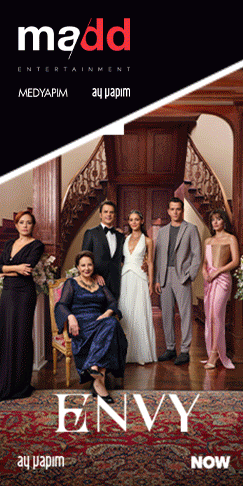Michael Cerdá, Executive VP of Streaming Products and Engineering at TelevisaUnivision, spoke to ttvnews about the technical challenges behind designing ViX, “the world’s largest streaming service in Spanish”, which is launching its AVOD version today.
In February, TelevisaUnivision announced the launch of ViX, the first global large-scale streaming service created specifically for the Spanish-speaking world.
Launching this Thursday, March 31, the platform will offer more than 50,000 hours of Spanish-language content across genres, including original series and movies, live sports, live news and current Televisa and Univision hits as well as access to an extensive library of top franchise content and formats from Televisa’s vault.
The two-tier service will include a free AVOD product, ViX, launching on March 31, with 100 EPG channels and vast-content VOD experience, and an SVOD option, ViX+, with premium content, including ViX+ Originals and exclusive soccer, set to launch in the second half of 2022.
Michael Cerdá, Executive VP of Streaming Products and Engineering at TelevisaUnivision, spoke to ttvnews about the technical challenge involved in creating a project of this size, the process of designing a high-quality streaming platform, the strategy behind the two-stage launch, and his expectations for the future.
ViX is described as the largest media streaming service in Spanish. What does it mean to be leading the launch of such a major product for the Hispanic community?
It’s truly an honor for me to have such an impactful role in building this new streaming service for the Hispanic community. It’s an honor and a responsibility to do this. It impacts the lives of over 600 million people in the world. What we learned a lot in research in working up to now is that the Hispanic community is striving to hear stories, to see their stories and themselves in the content they’re watching. And that’s special and unique, and something we’re doing that nobody else is doing. This is a very unique place and time, and opportunity.
Personally, when I was a young boy, my parents would have a lot of telenovelas on TV in the background and I grew up with that around me. And if they were here today, they would get a kick out of all this. It’s an honor, a responsibility, personally it’s exciting and I think one of the most impactful things to be working on right now.
What type of technical challenges does such a large project entail?
Building a streaming service at this point in time, 2022… video streaming has been around for a long time, we’re accustomed to streaming services as consumers now, so consumers have a certain expectation as to how these work. The good news is because of that, you don’t want to deviate too far from that expectation and do it really well. Building streaming services is not the hardest thing in the world to do, me and my team have done them before. We are re-applying lessons we’ve learned from the past, combining them with new content.
Coming together and launching this on web, iOS, Android, Roku, Amazon Fire TV… all at once, so really a lot challenge comes in doing those all at once, doing it in all 19 territories at once, US, Mexico and LatAm, that becomes the challenge. Because you’re taking a brand new technology stacking video service, millions of people starting to watch content on it at the same time, you’re going to find things that you need to fix or want to optimize.
And performance is everything, again coming back to the expectation people have regarding streaming services. They want to be able to find what to watch and they want it to play with quality. Those are the two keys. Finding what to watch is discovery, how do people browse and navigate your app to find what they want to watch. And playback is make it work, make it play quickly with good quality. And that’s what we’re striving to do and that all together is indeed the challenge.
Why did you decide to launch both options, AVOD and SVOD, at separate times? What is the strategy behind having both offers?
We had three different apps on the market on the AVOD side already that we had been testing with leading up to now. We had Prende TV in the US, we had Blim in Mexico and parts of LatAm, we had another ViX, a predecesor to this ViX, running in LatAm and the US. So we had three different AVOD services and it was much more organic to put those catalogs together, launch a new AVOD service with a new brand, bring all those audiences together, aggregating those audiences. That makes the most sense. We had all of that content, all those audiences, etc.
The SVOD piece includes very specific technology advances, as well as content. On the technology side, we have to add the notion of an account, of a subscriber, an identity with profiles which span multiple devices in a household, so you start watching on a phone and continue on a TV, it follows you around. Registration, payments, more advanced personalization, all of those things take more time to do, so we’re staging this to come to market in the second half of the year with the SVOD part of the strategy.
How do you see the company fitting in or competing against other Hispanic OTT platforms in the market? What makes it different from the rest?
ViX will absolutely have the largest content catalog with the widest range, with exclusive content, with news 24/7, sports… so the breath of the offering is much more significant and impactful, and there will be more here for viewers to watch. Beyond that, making this product super easy for people to discover what to watch and offer really high quality viewing. Discovery is really how do people find something to watch, and it’s about what do you put on the screen and where, how do you merchandise it.
In our case we’re going to have over 100 channels with more of a linear viewing experience for those who like to discover what to watch that way. They can lean back, browse, pick what to watch and so on. But then there’s another type of audience out there that’s maybe more deterministic and there’s something specific they want to watch, like a soccer match, for example. So they come into the app and go straight to that. So we have an on-demand section just for that. A sports hub, a news hub.
The way we’ve organized the information architecture of the experience is conducive to how people find what they want to watch. And I think once they start watching, the idea is to have very high quality playback. People in my organization are constantly looking on the backend of how are servers are performing, our response times, how quick does it take to start a movie or a show, etc. Those are all things that we’ll constantly be on top of. I’ve built a world-class team of people that some were here before, others I hired from other companies like Disney or Netflix, and brought them all together. So we have really strong expertise in delivering that quality and that’s what we aim to do.
Can you talk about the partnership with Google and how you’ve been working with their team?
We’re utilizing our Google Enterprise relationship to bring the full Televisa library and combining it with new originals that we’re bringing in. Leveraging everything from the coding to the transcoding, to deep storage, all the way to playback. And the first expression of that which you’re going to see is the launch of ViX. It will, in time, go well beyond that over the course of years as we move to a fully cloud-centric content model. To where content, whether it be the Televisa catalog or even a live soccer match, it’s instantly available throughout the entire company to edit, distribute, monetize and ultimately get to viewers so that they can enjoy this content.










